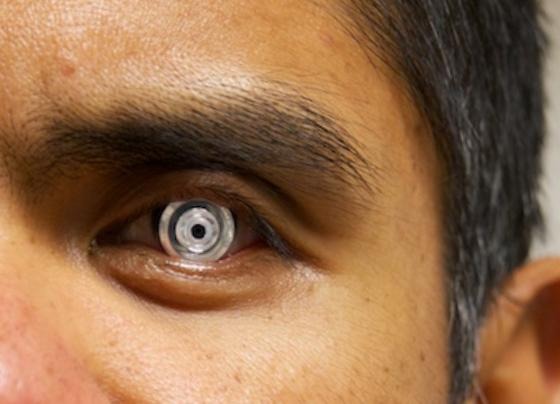Zooming Contact Lenses Enlarge At A Wink
A contact lens with a built in zoom that the wearer can switch at will between regular and telescopic vision could mean the end to dwindling independence for those with deteriorating eyesight, researchers suggested today. The rigid lens covers the majority of the front surface of the eye, including both the whites and the pupil, and contains an array of tiny aluminum mirrors that together can enlarge the world by 2.8x. Winking flips the view between regular and magnified.
The new lenses build on a previous iteration shown off in public back in 2013. As now, those contacts had a 2.8x zoom ratio, but they were not switchable.
To enable that, the researchers led by led by Eric Tremblay of the École Polytechnique Fédérale de Lausanne and Joseph Ford of University of California, San Diego added a polarized filter. Winking flips the filter in and out of play, directing light either to the tiny mirrored array or directly through for a regular view.

There's a drawback to the system, however, and that's a requirement for an actual pair of glasses as well. They're used to control the switching itself, as well as recognizing the wink trigger.
It's not the only design change since we saw the contact lenses last. A set of new aeration channels has been added to each lens, allowing circulation of oxygen around the surface of the eye, and thus extending the amount of time they can be worn.
Although having the ability to "enhance!" at the blink of an eye would be useful to most people, the researchers are particularly concerned about those with macular degeneration. There, central vision gradually fades, leaving the view of the world blurred unless cumbersome glasses to magnify that portion are worn.
Still, at around 1.55 mm thick, the contacts are still on the large side, though the team insists that they're still comfortable for extended periods.
Interestingly, among the funding sources is DARPA, which is keen to explore potential applications in the military for Bionic Man-style zooming vision.
VIA New Scientist
MORE UCSD
